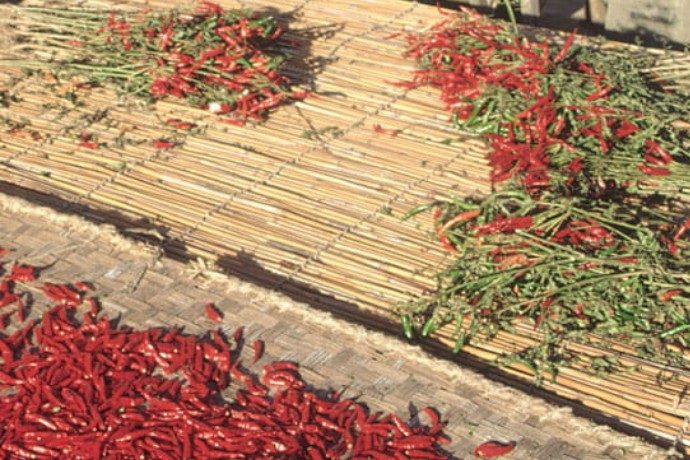Individuals who consume chili pepper may live longer and may have a significantly reduced risk of dying from cardiovascular disease (CVD) or cancer, according to preliminary research presented at the American Heart Association’s Scientific Sessions 2020, which was held virtually from Nov. 13 to 17. Previous studies have found eating chili pepper has an anti-inflammatory, antioxidant, anticancer and blood-glucose regulating effect due to capsaicin, which gives chili pepper its characteristic mild to intense spice when eaten.
To analyze the effects of chili pepper on all-cause and CVD mortality, researchers screened 4,729 studies from five leading global health databases. Their final analysis includes four large studies that included health outcomes for participants with data on chili pepper consumption. The health and dietary records of more than 570,000 individuals in the United States, Italy, China and Iran were used to compare the outcomes of those who consumed chili pepper to those who rarely or never ate chili pepper. Compared to individuals who rarely or never ate chili pepper, the analysis found that people who ate chili pepper had a 26% relative reduction in CVD mortality, a 23% relative reduction in cancer mortality and a 25% relative reduction in all-cause mortality.
“We were surprised to find that in these previously published studies, regular consumption of chili pepper was associated with an overall risk-reduction of all cause, CVD and cancer mortality. It highlights that dietary factors may play an important role in overall health,” said senior author Bo Xu, MD, cardiologist at the Cleveland Clinic’s Heart, Vascular & Thoracic Institute, Cleveland. “The exact reasons and mechanisms that might explain our findings, though, are currently unknown. Therefore, it is impossible to conclusively say that eating more chili pepper can prolong life and reduce deaths, especially from cardiovascular factors or cancer. More research, especially evidence from randomized controlled studies, is needed to confirm these preliminary findings.”
Researchers also noted that the amount and type of chili pepper consumed was variable among the studies, making it difficult to draw conclusions about exactly how much, how often and which type of chili pepper consumption may be associated with health benefits. The researchers are continuing to analyze their data and hope to publish the full paper soon.
Adding chili pepper seasonings to meat and poultry can be done through a marinade or as a topical rub or sauce. The researchers at McCormick Flavor Solutions, a business segment of McCormick & Co., Hunt Valley, Md., identified suya spice, which is generally made with ginger, hot chili powder and ground roasted peanuts, as a trending chili seasoning in its McCormick Flavor Solutions’ Flavor Forecast 2020. Suya brings a nuttiness and medium heat level to meat and poultry. It is common in West African cuisine, namely Nigerian beef kabobs. This street food features skewered juicy and spicy meat made with a slightly spicy peanut butter sauce. McCormick also suggests using the spice on chicken wings.
McCormick researchers singled out aji amarillo, guajillo, Tien Tsin and chili de arbol as up-and-coming chilies. They offer a unique level of heat and distinctive flavor. The forecast also shows Indian gunpowder spice, otherwise known as milagai podi, which translates to chili powder, being used to add kick to beef and chicken. This seasoning features finely ground roasted dal, sesame seeds, chilis and other spices, and can vary in heat levels based on the number and type of chilis.

